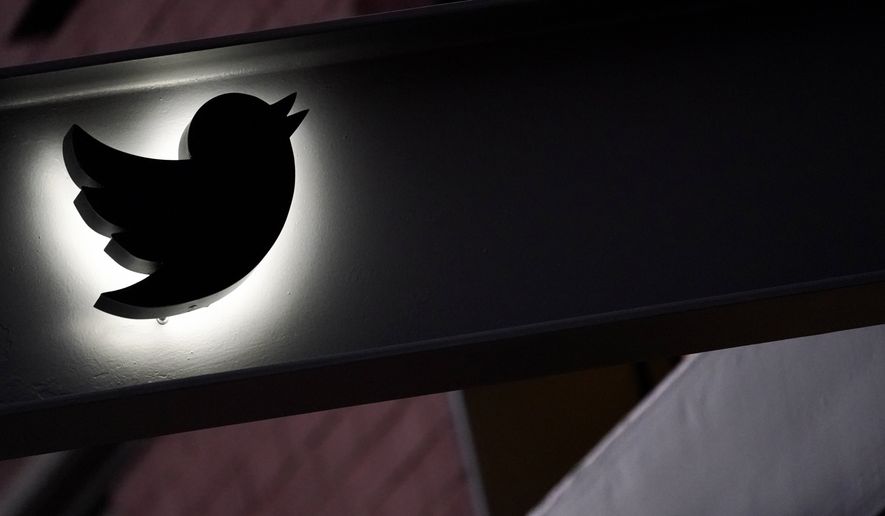Twitter executives were privately appalled by false claims that Russian bots had overtaken the platform and were being used to peddle right-wing talking points, but they declined to publicly push back as the fable swept headlines, the latest set of the “Twitter Files” reveals.
At the center of the Russian bot theory was Alliance for Securing Democracy’s Hamilton 68 dashboard, created by former FBI counterintelligence official Clint Watts. Hamilton 68 purported to track Russian influence on the platform and became widely cited by media and Democratic lawmakers to discredit conservatives and silence opposing views.
Internal emails reveal that company executives went back and forth over the dashboard’s false claims after Twitter performed its own analysis of platform data.
They warned that the flawed, partisan dashboard would be used to target ordinary users who expressed views that strayed from the liberal mainstream.
“I think we need to just call this out on the bull—— it is,” Twitter’s head of trust and safety Yoel Roth wrote to his colleague.
In a later email, Mr. Roth warned that the dashboard “falsely accuses a bunch of legitimate right-leaning accounts of being Russian bots.”
“Virtually any conclusion drawn from it will take conversations in conservative circles on Twitter and accuse them of being Russian,” he wrote.
Nonetheless, the claim swept headlines as pundits used the Russian bot theory to dismiss conservative hashtags that gained traction on the platform.
Alliance for Securing Democracy defended the Hamilton 68 dashboard’s methodology in a fact sheet provided to The Washington Times. The fact sheet said that the dashboard “provided a window into Russian propaganda and disinformation online.”
“The methodology never claimed this network represented ‘Russian bots,’” the fact sheet reads. “It looked at a network of accounts made up of a dynamic list of more than 600 Twitter accounts engaged, wittingly or unwittingly, with Russian influence activities online.”
Alliance for Securing Democracy said Hamilton 68 experts conducted interviews, including with some outlets that were “highly critical” of the dashboard, to “educate the media and the public on what this tool did and didn’t do.”
Internal emails disclosed in previous installments of the “Twitter Files” showed that company executives dismissed the dashboard after it was cited to swat down the Republican-led House Permanent Select Committee on Intelligence’s memo in 2018 that detailed FBI surveillance abuses against Donald Trump insiders.
Rep. Adam B. Schiff and Sen. Dianne Feinstein, both California Democrats, seized on the idea that the Kremlin’s troll farm was behind a trending hashtag on the platform calling for the release of a classified memo submitted by Rep. Devin Nunes, California Republican and chairman of the House intelligence committee, that detailed FBI abuses and the role of the debunked Steele dossier.
In an open letter days after the memo was drafted, the Democratic lawmakers said the hashtag had “gained the immediate attention and assistance of social media accounts linked to Russian influence operations.” The Democrats accused Mr. Nunes of distorting classified information in the memo.
Sen. Richard Blumenthal, Connecticut Democrat, wrote a separate open letter denouncing the Nunes memo. He said he found it “reprehensible that Russian agents have so eagerly manipulated innocent Americans.”
The open letters were coupled with hit pieces by media outlets widely dismissing the Republican-led memo as a joke.
One Twitter employee attempted to wave off a member of Mr. Blumenthal’s staff from making the claim because the company didn’t “believe these are bots.”
“It might be worth nudging Blumenthal’s staffer that it could be in his boss’ best interest not to go out there because it could come back to make him look silly,” another Twitter worker wrote in an internal email.
Mr. Blumenthal published his letter despite the warnings.
The latest batch of emails, released on Friday, shows Twitter executives grew more concerned as the theory gained traction.
“Real people need to know they’ve been unilaterally labeled Russian stooges without evidence or recourse,” Mr. Roth wrote.
Other employees proposed going public with the fact that the dashboard was a scam.
“Why can’t we say we’ve investigated … and citing Hamilton 68 is being wrong, irresponsible, and biased?” one anonymous employee wrote in an email to Mr. Roth.
The Alliance for Securing Democracy’s fact sheet shared with The Times notes that the methodology used to create the dashboard accounts “for the inclusion of some genuine Americans in the account list — not because they were labelled by analysts as being a bot or even Russian, but because the analytic techniques used identified them as being a part of a network that either promoted or engaged with Russian propaganda targeting American audiences.”
Mr. Roth ultimately recommended that Twitter call out the dashboard publicly.
Others cautioned that doing so would risk upsetting Alliance for Securing Democracy and potentially pose a political risk for Twitter.
“We have to be careful in how much we push back on ASD publicly,” said Emily Horne, Twitter’s global policy communications chief who went on to become a White House and National Security Council spokesperson in the Biden administration.
The alliance’s advisory counsel includes a deep bench of well-connected officials, including former Ambassador to Russia Michael McFaul, Clinton White House Chief of Staff John Podesta and several former top officials from the CIA, National Security Agency and Department of Homeland Security.
“I also have been very frustrated in not calling out Hamilton 68 more publicly, but understand we have to play a longer game here,” wrote Twitter public policy director Carlos Monje, who later became a senior adviser to Transportation Secretary Pete Buttigieg.
The latest “Twitter Files” release builds on installments showing how Twitter was coaxed into allowing the U.S. government to strong-arm its content moderation with a barrage of threats from Democrats who were angry about purported Russian interference in the 2016 presidential election.
Previously released internal documents revealed that Twitter came under pressure from Sen. Mark R. Warner of Virginia, the top Democrat on the Senate Select Committee on Intelligence, after Facebook suspended 300 accounts “with suspected Russian origin.”
After reviewing the Facebook data set, Twitter employees were unable to find similar patterns of accounts tied to Russia on their platform.
Twitter informed Mr. Warner that it had suspended 22 suspected Russian accounts and identified 179 others with “possible links” to Russia. The senator held a press conference and denounced Twitter’s review as “frankly inadequate on every level.”
Colin Crowell, Twitter’s vice president of public policy, remarked in an internal email after Mr. Warner’s browbeating that the senator had “political incentive to keep this issue at the top of the news” and to “maintain pressure” on Twitter and other social media companies to “keep producing material for them.”
Mr. Crowell wrote that Democrats were “taking cues” from 2016 presidential nominee Hillary Clinton, who in her “What Happened” book tour blamed Russian propaganda and dirty tricks on social media for helping elect Mr. Trump, whom she called an illegitimate president.
Twitter formed a Russia task force to further investigate claims of foreign influence on the platform amid growing pushback from lawmakers and the press.
In an internal memo from Oct. 13, 2017, Twitter employees wrote that they had revealed “no coordinated approach” by Russian actors to influence Twitter users and noted that the majority of accounts with questionable links to Russia seem to be “lone-wolf” activity.
“First round of [Russia] investigation … 15 high-risk accounts, 3 of which have connections with Russia, although 2 are RT,” Twitter employees wrote in a following memo. They were referring to Russia Today, the Kremlin-controlled English-language news channel.
The task force continued to refine its data model in an attempt to check out more Russia-linked accounts but to little avail.
By Oct. 23, the task force had finished manually reviewing 2,500 accounts. It found 32 suspicious accounts and 17 connected with Russia. Just two of the Russia-linked accounts, including Russia Today, spent significant amounts of money.
• Joseph Clark can be reached at jclark@washingtontimes.com.




Please read our comment policy before commenting.